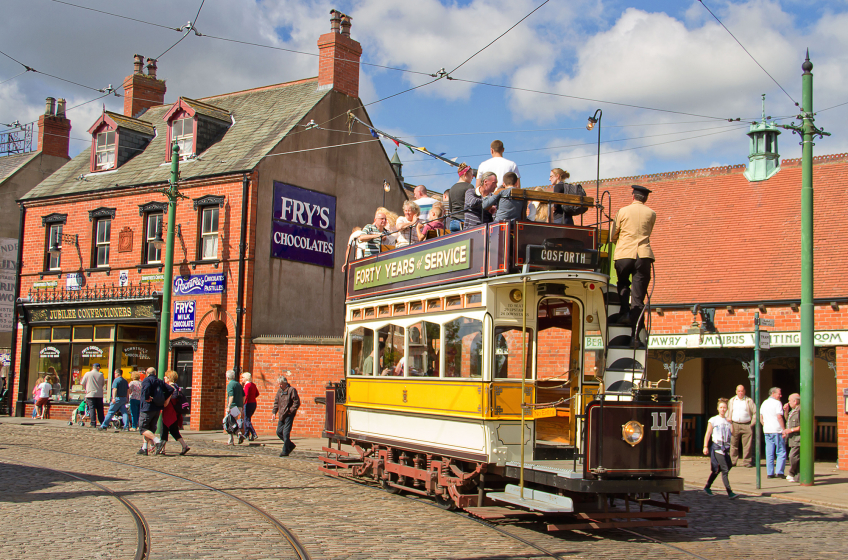Discover Beamish | A Visitor's Introduction to Beamish Museum
Beamish, the Living Museum of the North, offers an immersive journey into the history of North East England during the 1820s, early 1900s, 1940s, and 1950s. Located in County Durham, this open-air museum spreads over 350 acres, showcasing how life in the region has evolved over the centuries.
Recommended Accommodation Near Beamish: Hotels Bed & Breakfasts Pub Accommodation
Check here for current Beamish opening times and ticket information
Beamish is not just a museum with static exhibits; it's a dynamic, interactive experience that brings history to life through meticulously reconstructed buildings, vehicles, objects, and costumed staff.
Key Beamish Attractions
1. 1900s Town: Visitors can explore a bustling Edwardian town complete with shops, a bank, a school, a dentist’s surgery, and a Masonic Hall. The town features authentic period businesses, including a sweet shop where traditional confectioneries are made and sold, and a bakery offering freshly baked goods. The town also hosts events and activities that reflect the social and economic conditions of the time.
2. 1940s Farm: This part of the museum replicates wartime Britain, providing insight into rural life during World War II. The farm demonstrates how families adapted to the challenges of the era, including rationing and the Dig for Victory campaign. Visitors can see livestock, visit the farmhouse, and learn about the Home Guard and Women's Land Army.
3. 1820s Pockerley: A depiction of early 19th-century rural life, Pockerley features a manor house, gardens, and agricultural practices from the period. Highlights include the Pockerley Old Hall and the atmospheric St Helen’s Church. Horse-drawn carriage rides offer a unique way to experience this era.
4. 1900s Pit Village: This area represents the life of coal miners and their families in the early 20th century. Key features include miners' cottages, a chapel, a school, and a colliery with a winding engine. Visitors can interact with costumed interpreters, learn about the harsh realities of mining life, and even try their hand at traditional crafts in the village’s workshops.
5. 1950s Town: Currently under development, this section aims to capture the spirit of post-war Britain. The area will feature homes, shops, and amenities from the 1950s, offering a glimpse into the decade’s culture and daily life.
Practical Information
Opening Hours: Beamish is open daily, but hours can vary seasonally. It's advisable to check the museum’s official website before planning your visit.
Tickets: Admission prices include access to all areas of the museum. Tickets are available online and at the gate. Annual passes are also offered, providing unlimited visits for a year.
Accessibility: Beamish strives to be accessible to all visitors. There are accessible parking spaces, restrooms, and free wheelchair hire. The museum’s large site means that some areas have uneven terrain, but accessible routes are available.
Dining: Several dining options are scattered throughout the museum, offering a variety of period-appropriate and modern food and drink. The café in the 1900s Town and the tearooms are popular choices.
Events: Beamish hosts numerous events throughout the year, such as Christmas celebrations, Halloween activities, and historical reenactments. These events often include special displays and hands-on activities for visitors of all ages.
Visitor Tips
Plan Ahead: Due to the extensive size of Beamish, it’s beneficial to allocate a full day to explore the museum fully. A map and timetable of daily activities are available upon entry.
Weather Preparedness: As an open-air museum, Beamish can be subject to the whims of the weather. Dress appropriately and consider bringing umbrellas or sun protection.
Comfortable Footwear: Expect to do a lot of walking. Comfortable shoes are essential for navigating the large, diverse site.
Shortlist
- Your Shortlist is empty

